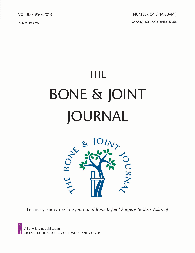
ARTHROPLASTY
No significant benefit of PSI over conventional instruments in total knee arthroplasty
This report has been verified
by one or more authors of the
original publication.
Bone Joint J. 2016 Aug;98-B(8):1043-9
140 patients scheduled for total knee arthroplasty were randomized to have the procedure completed with the use of either patient-specific instrumentation (PSI) or conventional intramedullary guides (CONV). The purpose of this study was to evaluate if patient-specific instrumentation afforded significantly better alignment of the lower limb, and individual component alignment. Postoperative alignment was assessed via CT at 6 weeks. Clinical outcome was also assessed up to 1-year follow-up. Results demonstrated no significant differences between groups in the incidences of outliers in hip-knee-ankle angle, in the coronal, sagittal, and axial alignment of the femoral component, or in the coronal alignment of the tibial component. The incidence of outliers in the sagittal alignment of the tibial component was significant higher in the PSI group compared to the CONV group. Additionally, there were no clinically important differences in Oxford Knee Scores.
Unlock the full ACE Report
You have access to {0} free articles per month.Click below to unlock and view this {1}
Unlock NowCritical appraisals of the latest, high-impact randomized controlled trials and systematic reviews in orthopaedics
Access to OrthoEvidence podcast content, including collaborations with the Journal of Bone and Joint Surgery, interviews with internationally recognized surgeons, and roundtable discussions on orthopaedic news and topics
Subscription to The Pulse, a twice-weekly evidence-based newsletter designed to help you make better clinical decisions
Exclusive access to original content articles, including in-house systematic reviews, and articles on health research methods and hot orthopaedic topics
Or upgrade today and gain access to all OrthoEvidence content for just $1.99 per week.
Already have an account? Log in


Subscribe to "The Pulse"
Evidence-Based Orthopaedics direct to your inbox.
{0} of {1} free articles
Become an OrthoEvidence Premium Member. Expand your perspective with high-quality evidence.
Upgrade Now













































































